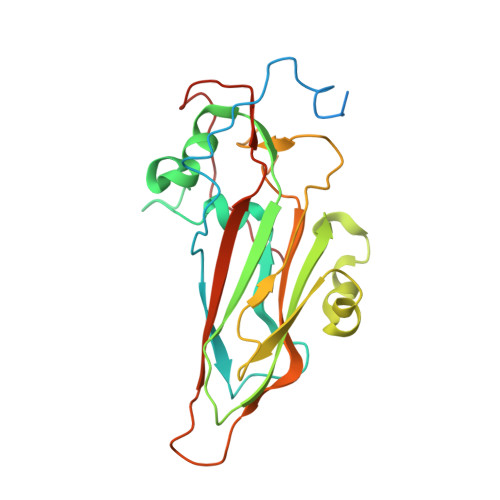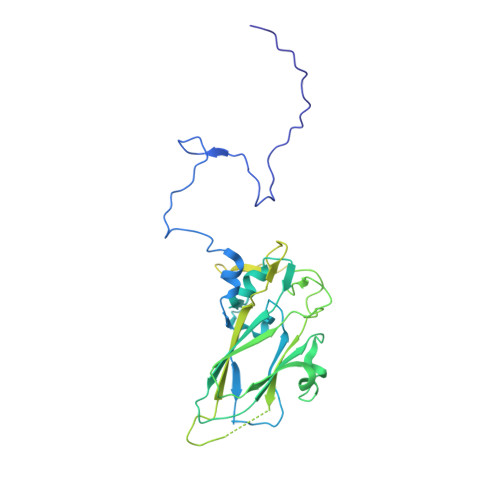Cryo-EM study of slow bee paralysis virus at low pH reveals iflavirus genome release mechanism.
Kalynych, S., Fuzik, T., Pridal, A., de Miranda, J., Plevka, P.(2017) Proc Natl Acad Sci U S A 114: 598-603
- PubMed: 28053231
- DOI: https://doi.org/10.1073/pnas.1616562114
- Primary Citation of Related Structures:
5LK7, 5LK8 - PubMed Abstract:
Viruses from the family Iflaviridae are insect pathogens. Many of them, including slow bee paralysis virus (SBPV), cause lethal diseases in honeybees and bumblebees, resulting in agricultural losses. Iflaviruses have nonenveloped icosahedral virions containing single-stranded RNA genomes. However, their genome release mechanism is unknown. Here, we show that low pH promotes SBPV genome release, indicating that the virus may use endosomes to enter host cells. We used cryo-EM to study a heterogeneous population of SBPV virions at pH 5.5. We determined the structures of SBPV particles before and after genome release to resolutions of 3.3 and 3.4 Å, respectively. The capsids of SBPV virions in low pH are not expanded. Thus, SBPV does not appear to form "altered" particles with pores in their capsids before genome release, as is the case in many related picornaviruses. The egress of the genome from SBPV virions is associated with a loss of interpentamer contacts mediated by N-terminal arms of VP2 capsid proteins, which result in the expansion of the capsid. Pores that are 7 Å in diameter form around icosahedral threefold symmetry axes. We speculate that they serve as channels for the genome release. Our findings provide an atomic-level characterization of the genome release mechanism of iflaviruses.
Organizational Affiliation:
Structural Virology, Central European Institute of Technology, Masaryk University, 62500 Brno, Czech Republic.
















